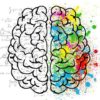The Third International Summit on Human Genome Editing, a three-day conference organized by the Royal Society, the U.K. Academy of Medical Sciences, the U.S. National Academies of Sciences and Medicine and The World Academy of Sciences, was held this week in March 2023 at the Francis Crick Institute in London. Scientists, bioethicists, physicians, patients and others gathered to discuss the latest developments on this technology that lets researchers modify DNA with precision. And a major topic at the summit was how to enforce research policies and ethical principles for human genome editing.
One of the first agenda items was how to regulate human genome editing in China in light of its misuse in 2018, when scientists modified the DNA of two human embryos before birth to have resistance against HIV infection. The controversy stems from the fact that because the technology is relatively early in its development, and its potential risks have not been reduced or eliminated, editing human embryos in ways they could pass on to their own offspring could lead to a variety of known and unknown adverse complications. The summit speakers noted that while China has updated its guidelines and laws on human genome editing, it failed to address privately funded research – an issue other countries also face. Many countries, including the U.S., do not have sufficiently robust regulatory frameworks to prevent a repeat of the 2018 scandal.
We are a biochemist and a geneticist who teach and conduct research in genomics and ethics at the Rochester Institute of Technology. As in our classrooms, debate about genome editing continues in the field.
Listening to different perspectives about CRISPR could lead to more balanced discussions about how to regulate it.
What is genome editing?
The human genome typically consists of 23 pairs of chromosomes made of approximately 3.2 billion nucleotides – the building blocks of DNA. There are four nucleotides that make up DNA: adenine (A), thymine (T), guanine (G) and cytosine (C). If the genome were a book, each chromosome would be a chapter, each gene on a particular chromosome would be a paragraph and each paragraph would be made of individual letters (A, T, G or C).
One can imagine a book with over 3 billion characters might need editing to correct mistakes that occurred during the writing or copying processes.
Genome editing is a way for scientists to make specific changes to the DNA in a cell or in an entire organism by adding, removing or swapping in or out one or more nucleotides. In people, these changes can be done in somatic cells, those with DNA that cannot be inherited by offspring, or in gamete cells, those containing DNA that can be passed on to offspring. Genome editing of gamete cells, which includes egg or sperm, is controversial, as any changes would be passed on to descendants. Most existing guidelines and policies…



